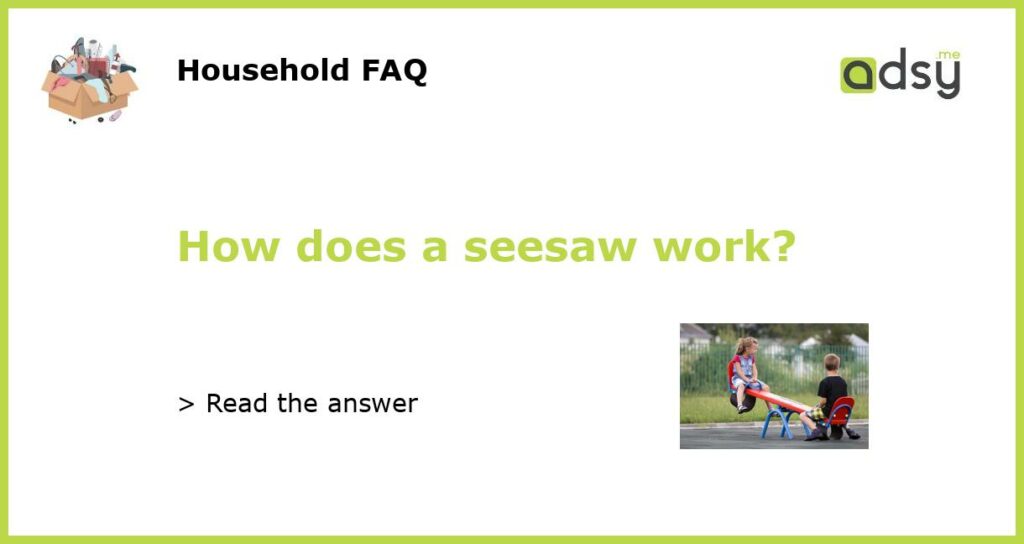What is a seesaw?
A seesaw is a playground equipment that consists of a long, narrow board supported by a fulcrum in the middle. It is designed for two people to sit on either end and take turns pushing off the ground to make the board go up and down.
The physics behind a seesaw
At first glance, a seesaw may seem like a simple piece of equipment, but there is actually a lot of physics at play. The most important physics principle behind a seesaw is the law of the lever.
The law of the lever states that for a lever to be balanced, the product of the force applied on one end and the distance from the fulcrum must equal the product of the force applied on the other end and its distance from the fulcrum. In other words, the shorter the distance from the fulcrum, the greater the force needed to balance the lever.
When two people of different weights sit on a seesaw, the person who is heavier will exert a greater force on their end. This force will cause the heavier person’s end to go down while the lighter person’s end goes up. The seesaw will then balance out when the product of the force and distance on one end equals the product of the force and distance on the other end.
The role of the fulcrum
The fulcrum is the pivot point in the center of the seesaw. It acts as a fixed point around which the seesaw can rotate. The positioning of the fulcrum has a significant impact on how the seesaw behaves.
If the fulcrum is closer to one end of the seesaw, that end will have a shorter distance to travel and require less force to go up and down. This means that the person on the shorter end will have an easier time pushing off the ground and making the seesaw move. On the other hand, the person on the longer end will need to exert more force to achieve the same movement.
If the fulcrum is placed at the exact center of the seesaw, the forces and distances on both ends will be equal, resulting in a balanced seesaw. Both people will need to exert the same amount of force to keep the seesaw level.
Safety considerations
While seesaws can be a fun and enjoyable playground equipment, there are certain safety considerations to keep in mind:
- Ensure that the seesaw is on a level surface and free from any obstructions that could cause it to tip over.
- Inspect the seesaw regularly for any signs of wear or damage, such as broken boards or loose fittings.
- Always supervise young children when they are using a seesaw to prevent accidents or injuries.
- Encourage children to take turns and be mindful of each other’s safety while using the seesaw.
The benefits of seesaw play
Seesaw play offers several benefits for children:
- Physical development: Using a seesaw requires coordination and balance, which can help develop a child’s gross motor skills.
- Social interaction: Seesaws can promote social interaction and teamwork as children take turns and communicate with each other to create movement.
- Fun and enjoyment: Seesaws provide a source of enjoyment and entertainment for children, allowing them to have fun and experience the joy of play.
In conclusion, a seesaw works based on the principles of physics, specifically the law of the lever. The positioning of the fulcrum and the distribution of weight on each end determine how the seesaw moves. By understanding the mechanics and following safety guidelines, children can enjoy the benefits of seesaw play while staying safe.






